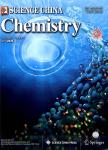Decarboxylative cyanation and thiocyanation via catalytic electron donor-acceptor complex with copper catalysis
作者机构:Key Laboratory of Material Chemistry for Energy Conversion and Storage Ministry of Education Hubei Key Laboratory of Bioinorganic Chemistry and Materia Medica School of Chemistry and Chemical Engineering Huazhong University of Science and Technology (HUST) State Key Laboratory of Coordination Chemistry School of Chemistry and Chemical Engineering Nanjing University Shenzhen Huazhong University of Science and Technology Research Institute
出 版 物:《Science China Chemistry》 (中国科学:化学(英文版))
年 卷 期:2024年第67卷第9期
页 面:3019-3028页
核心收录:
学科分类:081704[工学-应用化学] 07[理学] 08[工学] 0817[工学-化学工程与技术] 070303[理学-有机化学] 0703[理学-化学]
基 金:supported by the National Natural Science Foundation of China (22201087) the National Key R&D Program of China (2022YFA1503200) Guangdong Basic and Applied Basic Research Foundation (2022A1515012507)
主 题:electron donor-acceptor catalysis copper catalysis cyanation thiocyanation asymmetric synthesis
摘 要:A new catalytic decarboxylative cyanation and thiocyanation via a synergistic Na I/Cu catalysis is developed. The photoexcited electron donor-acceptor complex by assembly of Na I, R3P, and N-acyloxy-phthalimide ester(NHPI ester) triggers the generation of alkyl radical species, which then engages in Cu-catalyzed radical coupling process. Key to success of this dual catalytic transformation is the reliable charge transfer between I· and Cu(I). This dual catalytic platform can eliminate the use of expensive iridium-based photocatalyst or synthetically elaborate organic dyes. A series of primary, secondary, and tertiary alkyl nitriles and thiocyanates are easily synthesized. Moreover, an asymmetric decarboxylative cyanation by applying a chiral Cu catalyst is also developed to afford chiral nitriles in high enantioselectivity. The mechanistic details and the origin of the high enantioselectivity are further investigated by the mechanistic experiments and the density functional theory calculations.



